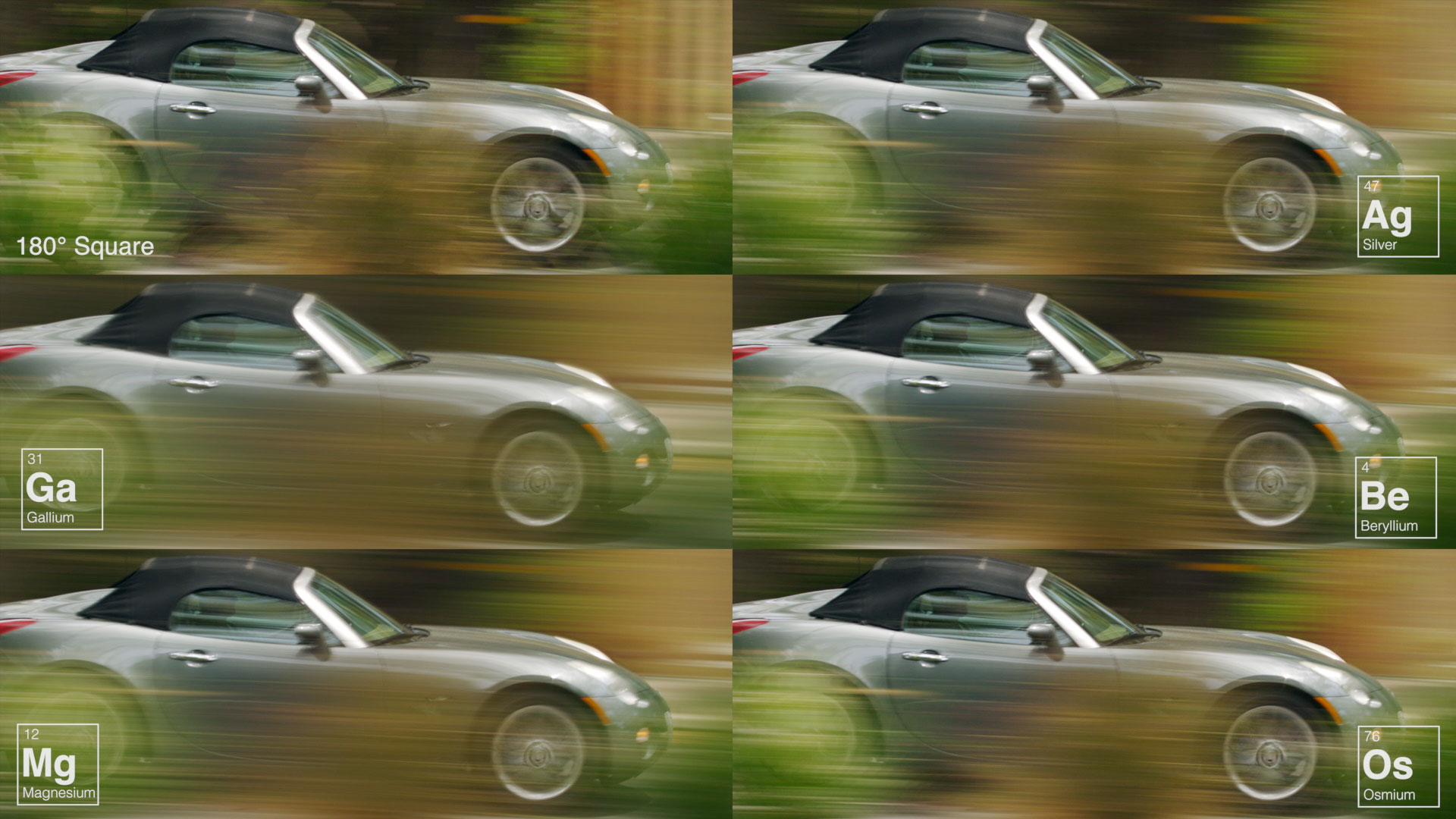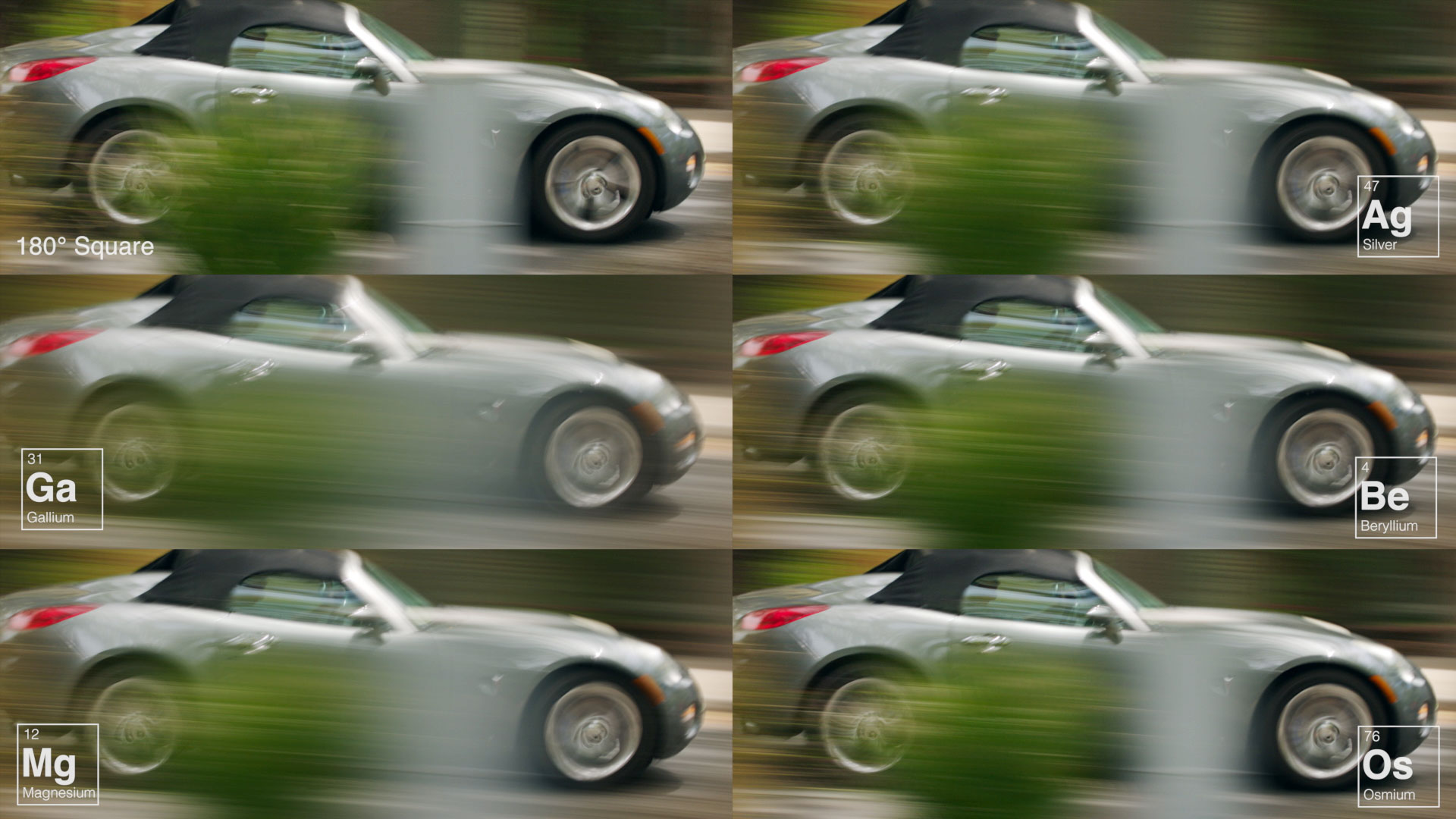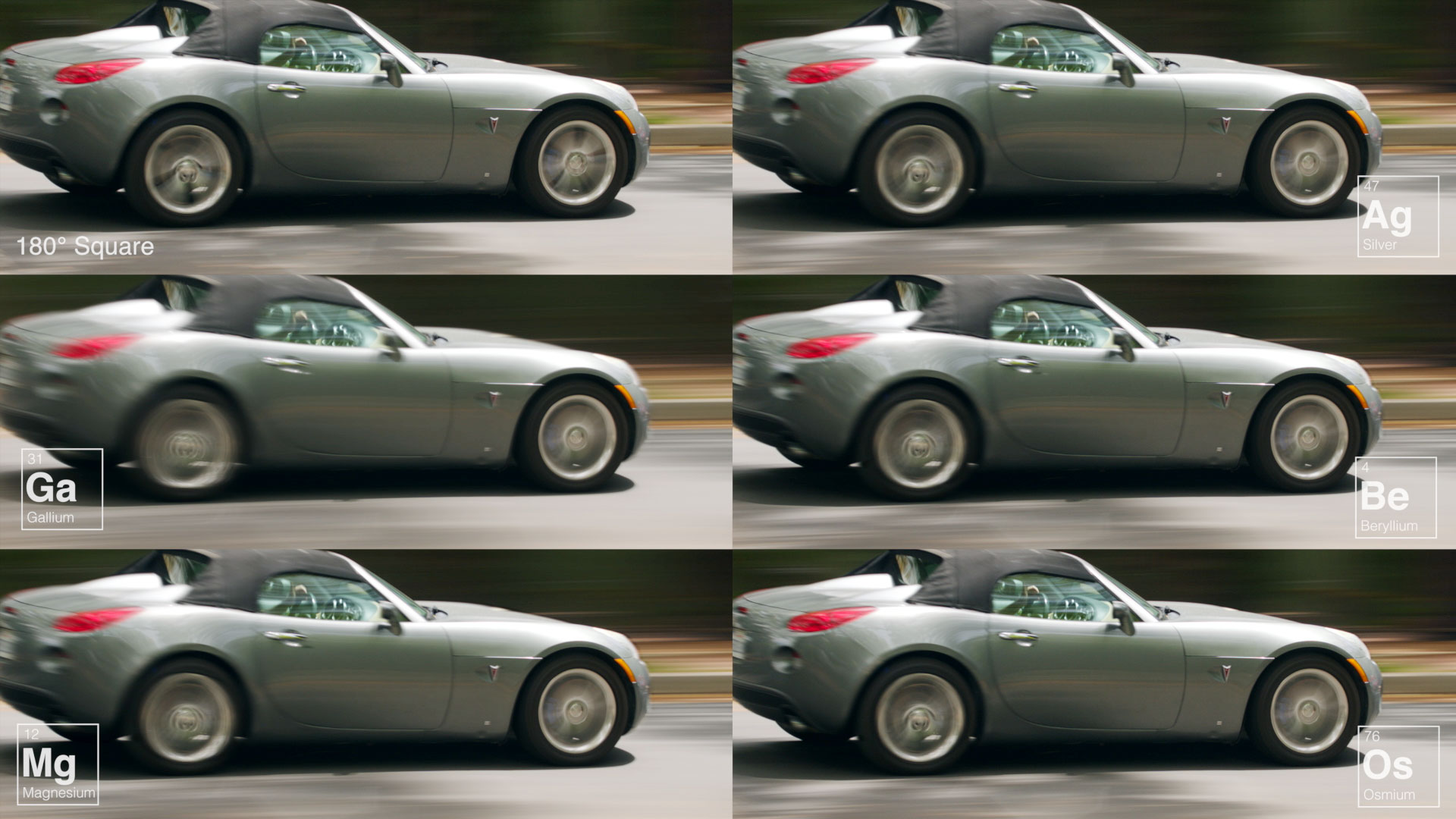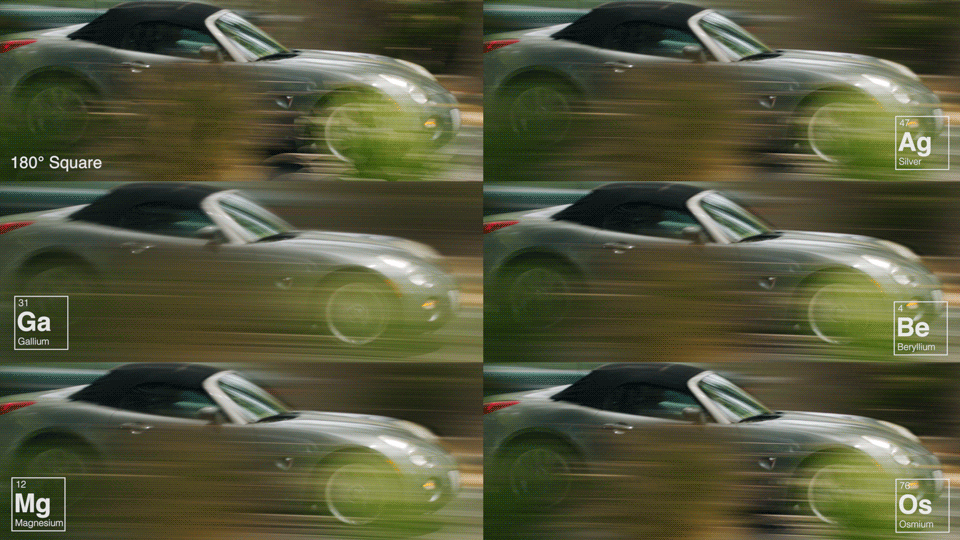Tessive Elemental Shutters
With synthetic shutters moving beyond the constraints of square-wave shutters, there are now infinitely many possible shutter waveforms.
Tessive's family of Elemental Shutters are designed to allow filmmakers enormous control over the look and feel of their production, giving creative flexibility with standardized selections. It's important to be able to "lock in" a particular look that matches the aesthetic goals.
Tessive has worked for years to match the mathematics of frame capture with the aesthetics of motion. Each of the Elemental Shutters has a signature look resulting from our testing. Some give a smooth, almost completely judder-free look, while others replicate crisper looks associated with film cameras.
It's not just "sharpness" or "judder". There are many competing parameters that go into crafting a new shutter waveform, and each shutter is as unique as a different metal. They have different "brittleness", "hardness", "density", and "ductility" when we see the footage created with them. Because of this, we gave them element names--names of metals that have characteristics reminding us of the look each creates.
The Tessive Gallium shutter renders the softest, silkiest image of our family of shutters. At 24 frames-per-second, it can render dreamy, flowing motion that practically melts in your hand. Used for higher frame rate outputs, it yields a cinematic look without judder.
The Tessive Magnesium shutter is designed to achieve a good balance between hardness and judder reduction. It is a useful all-around shutter that is reasonably rigid yet springy and light.
The Tessive Silver shutter replicates a look that first appeared in the Time Filter® product, and provides judder reduction within a single frame-time. It's sharpness and stability will give a classic look.
Light and hard, the Tessive Beryllium shutter has sharp edges. To achieve high contrast, it allows a crisp edge response with some overshoot. This lightweight shutter will handle fast motion with very little choppiness.
The Tessive Osmium shutter is the hardest of the family, with full response in the baseband while rolling off judder slowly. Its heavy and unyielding response can provide crisp stability while still removing the most offensive choppiness.
Click on the above image to see different frames and to view this sequence in action.
Technically speaking, each Elemental Shutter is designed to target a different area of the frequency response, and trade off sharp contrast response for other characteristics, such as judder reduction, accuracy of the persistence-of-vision image, and ripple in the motion. The table shows a grading for each of these characteristics for the Tessive Elemental Shutters compared with two traditional square wave shutters.
Sharpness
Sharpness is the most obvious metric, and refers to how much contrast moving items retain in each frame. A shutter with higher sharpness shows more detail in each frame. This comes at the expense of judder and a continuous persistence-of-vision image.
Judder
In playback, judder appears as choppy motion with lots of edges that don't connect frame-to-frame. The technical term for this metric is "temporal sampling aliasing". It relates to how backgrounds render in pans, and wagon wheels appearing to spin backwards. After sharpness, this is the next most important metric for determining how footage is perceived by the audience.
Judder should not be confused with strobing (temporal reconstruction aliasing), which is a projector effect not changed by the camera shutter, synthetic or otherwise.
Persistence-of-Vision Image
Imagine footage of a snowflake falling against a dark background. In real life, the white snowflake would appear to make a single, unbroken white line in our vision. Our eye would perceive a solid smear of white against the dark background. In motion picture cameras with square shutters, if the shutter is not set to a full 360-degree shutter, there will be gaps in time where the motion of the snowflake isn't captured, so in playback the frames form a dashy line when we see it. The line formed by the motion of the snowflake has gaps in it.
Three of the Tessive Elemental shutters are designed to preserve this continuous line while providing more sharpness and less judder than any square wave shutter can provide. While most audiences don't pay particular attention to the details of dashy versus continuous lines in the footage, you can be sure they feel the difference. The glossy impact of a solid POV image is spectacular.
Ripple
To achieve high contrast imagery, three of the Tessive shutters include negative components, meaning that as something bright moves across the screen, the motion blur before and after the bright area will dip slightly darker than it would be if things were stationary. This dip is usually not directly noticeable by the viewer, but is perceived as increased overall sharpness in the motion. The dip and overshoot constitute "ripple" in the motion, and serve to accentuate motion and preserve a POV image without adding to judder. Normal square wave shutters have no ripple at all, and neither do the Gallium and Silver Tessive shutters.










